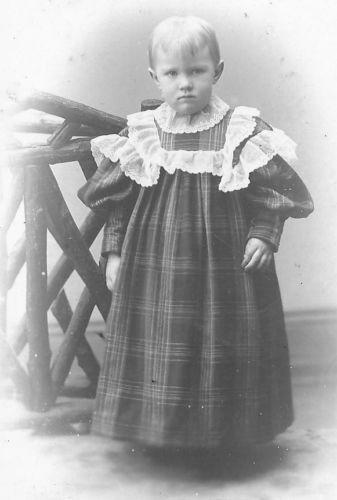
Figure 1.--This unidentified Detroit boy wears a long dress with no waistline. The portrait is undated, but look like the 1890s to us. He looks to be about 2 years old. |

|
We see American boys wearing dresses with varying hem lengths. We note hem lengths which varied from just at or more commonly just below the knee to long ankle lengths covering the child from the neck to the ankle. We do not see higher lengths because they were not worn at the time boys wore dresses. Knee-length dresses were worn by some little girls in Europe, but not in America. Many dresses were dome a mid lengths, about calf level. The really long hems look rather unusual on young children. Long hems were worn for women both for modesty and fashion. Both of these factors would seem less important for very young children especially little boys. This is difficult to assess, but we can gather information on the various lengths and chronology. As this process develops we can begin to assess the prevalence of the various lengths and the conventions involved. We find the same pattern in the other skirted garments boys wore such as skirts and kilts. his is somewhat difficult to assess because dresses to a substantial degree dresses for boys were being replaced by kilt suits.
The highest hems worn by most American boys were knee length. We do not see higher lengths because they were not worn at the time boys wore dresses. Even children were required to cover their legs. Knee-length dresses were worn by some very young girls in Europe, but not to any extent in America. Americans were much more puritanical than Europeans even for very young children. Modesty was a major factor in American fashion. It is one reason why long stockings were so prevalent in America. We do not see many examples of short dresses. We have seen relatively short dresses, albeit usually worn by pantalettes in England. We even some knees. his was much less common in America.
Many dresses were done at mid-lengths, about calf level. Here there were variations. Some were at mid calf. Others were somewhere between mid-calf and more toward the ankle. So we have to use a degree of judgement as to which were calf and which were ankle length. We see fewer dresses that were done above mid-calf. And of course, there are difference from when mother purchased or sewed the dress and how the boy grew while wearing it. One would think that mother surly had some growth in mind with he boy here (figure 1). We notice quite a few dresses with mid-lenghh hems, but have just begun to archive them here.
We see many portraits of boys wearing long dresses. We are not yet sure about girls of comparable ages. Both boys on the previous page in the 1880s had ankle length dresses. This depended on chronological fashions as well as the age of the child. The really long hems look rather unusual on young children. And we are not sure why this was so common. Long hems were worn for women both for modesty and fashion. Both of these factors would seem less important for very young children especially little boys. Long dresses were, however, very common, especially for the younger boys. We are not sure why this was, but there are some possibilities. One is warmth. Another is to provide room for growth, For centuries this was the length worn. Notably we see younger boys wearing dresses even though after the mid-19th century we see older boys and girls wearing shorter dresses. Long dresses for infants seems understandable, but for toddlers just learning how to walk they seem a very unpractical choice. We see these long dresses into the very early-20th century.
Navigate the Historic Boys' Clothing Web dress pages:
[Return to the Main U.S dress length page]
[Return to the Main U.S. national dress page]
[Pinafores]
[Ringlet curls]
[Smocks]
[Bodice kilts]
[Kilts]
[Fauntleroy dresses]
[Sailor dresses]
[Fancy dresses]
[Dresses: 16th-18th centuries]
[Dresses: Early-Mid-19th century]
[Dresses: Late-19th century]
[Dresses: Early 20th century]
[Difficult images]
[Movie dresses]
Navigate the Boys' Historical Clothing Web Site:
[Introduction]
[Activities]
[Biographies]
[Chronology]
[Clothing styles]
[Countries]
[Bibliographies]
[Contributions]
[Essays]
[FAQs]
[Glossaries]
[Images]
[Links]
[Registration]
[Tools]
[Boys' Clothing Home]
